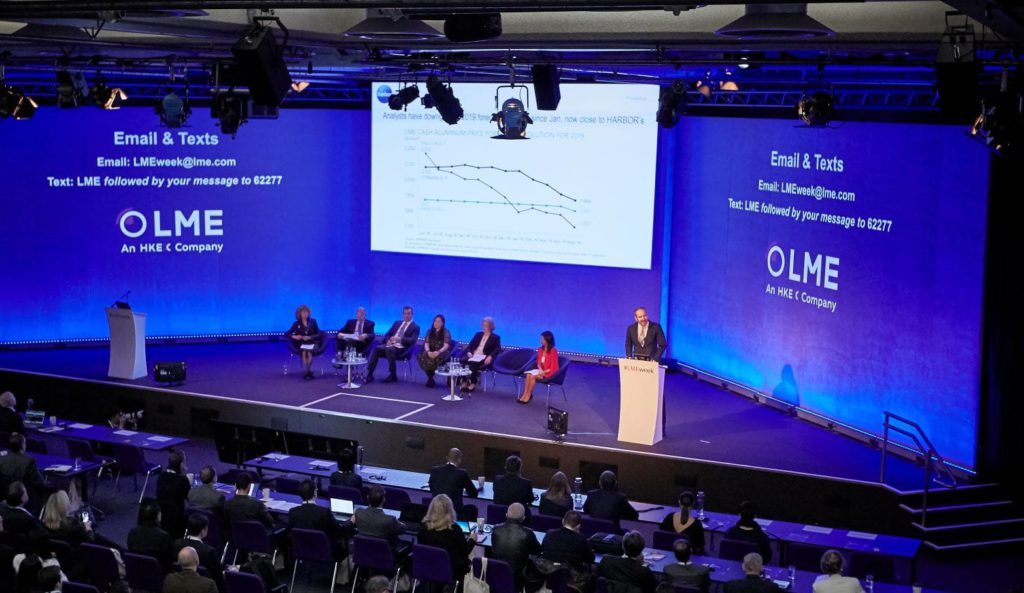Nickel debacle casts long shadow as industry masses in London

The ramifications of 2022’s London Metal Exchange nickel trading debacle, including potential challenges to its nickel contract and the fate of the exchange itself will be hot topics next week as the metals industry descends on London.
On March 8, last year, the 145-year old exchange was plunged into crisis – forced to halt nickel trading for the first time since 1988 – when prices more than doubled in a few hours to records above $100,000 a metric ton.
Volumes and liquidity in the aftermath collapsed as many users wary of heightened volatility abandoned the LME’s nickel contract and started looking for alternatives.
As yet, there are no real alternatives. The Shanghai Futures Exchange (ShFE) offers a nickel contract on its domestic exchange, but trading it is difficult for foreigners who need an affiliation with a Chinese entity.
But ShFE is now looking into the possibility of nickel futures for the international market, while CME Group is examining a contract that would settle against prices gathered from a platform to be launched by UK-based Global Commodities Holdings.
“Nickel, what the other exchanges are doing, how long Matt Chamberlain will survive [as CEO] are all on the agenda,” a senior industry source said.
Metal broking sources say speculation that Hong Kong Exchanges & Clearing (HKEx) would sell the LME and its clearing house is still rife, despite HKEx recently saying it remains committed to its London unit.
“HKEx have been extremely supportive over the last 18 months. I see us as a long term member of the group,” Chamberlain told Reuters.
Also in focus are the lawsuits bought by US-based hedge fund Elliott Associates and market maker Jane Street Trading for $472 million, stemming from the $12 billion of nickel trades the LME cancelled on March 8, 2022.
“The LME vigorously defended itself at trial, highlighting that the actions it took on 8 March 2022 averted significant and systemic damage to the nickel market as well as other metals markets and derivatives markets more widely,” the LME said in response to a request for comment.
The LME declined to comment on any other aspects of market talk.
China returns
During the Covid lockdowns in 2020 and 2021, the event known as LME Week was virtual. Last year it was live, but missing delegates from China, the world’s largest consumer of industrial metals, because of extended lockdowns.
“We expect attendance at LME week will be almost double the levels of 2022 and is now returning to pre-Covid levels,” said Sucden Financial’s chief executive Marc Bailey. “We have seen a lot of interest from our Chinese clients this year, who want to meet in person for the first time in a while.”
One highlight of the week will be the dinner on Tuesday Oct. 10 at the Grosvenor House hotel in Mayfair which 1,600 people will attend, similar to the numbers from 2019 before Covid lockdowns, compared with 1,400 last year, according to the LME.
Meanwhile, the seminar on Monday Oct. 9 has attracted 600 delegates equivalent to the numbers from 2019, the LME said.
Green bonanza
On the fundamental front, discussions will focus on accelerating demand in future years as the shift towards electric vehicles and renewables such as solar and wind power are expected to create a bonanza for the industry.
The energy transition is also expected to dilute the importance of China to the metals industry as demand from Europe and the United States for metals such as copper, nickel, aluminum and cobalt picks up pace.
“When the next upturn starts we’re likely to see demand from green technology, accounting for 12%-15% of global industrial metals demand now, growing at 25%-30% for some years,” said Jay Tatum Portfolio manager at Valent Asset Management.
“That’s an enormous growth rate. Combine that with growing demand from other sectors and it doesn’t look as if supplies with match consumption.”
(By Pratima Desai; Editing by Veronica Brown and Alexandra Hudson)
{{ commodity.name }}
{{ post.title }}
{{ post.date }}

Comments